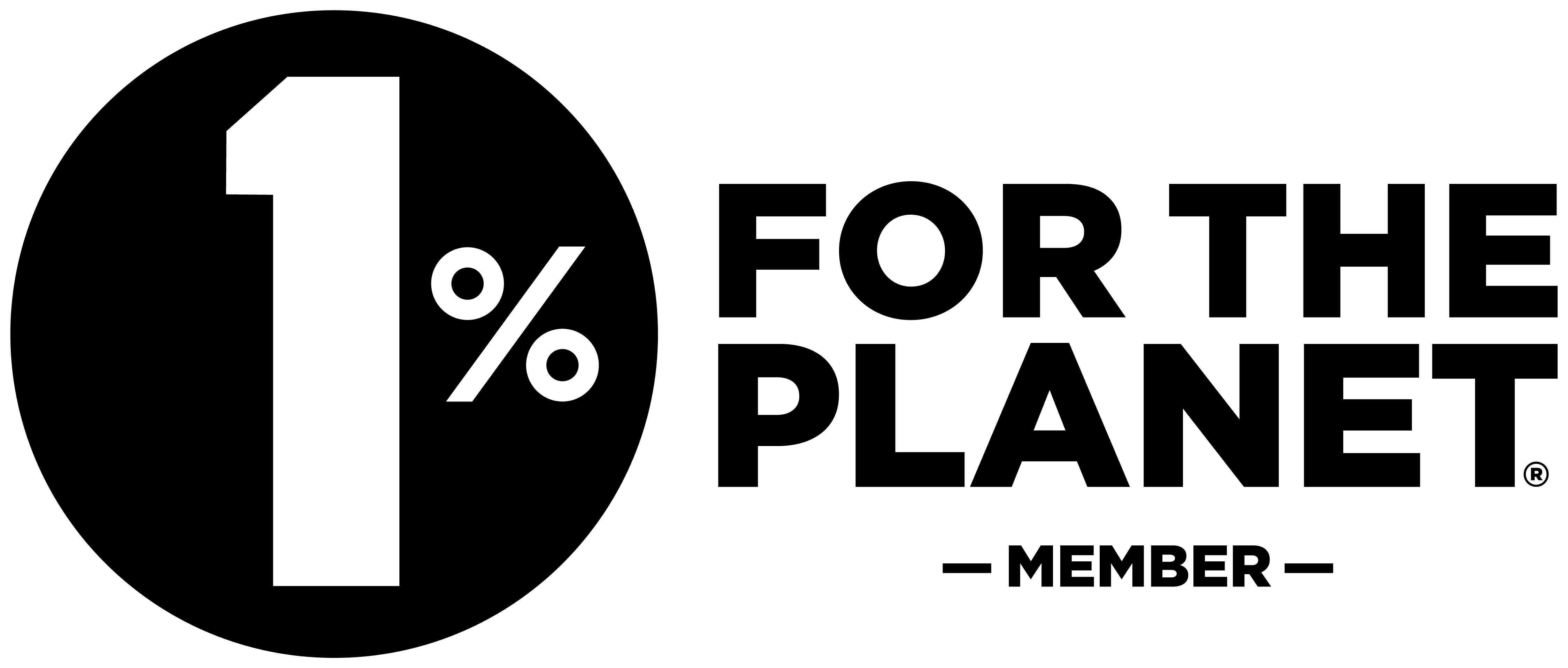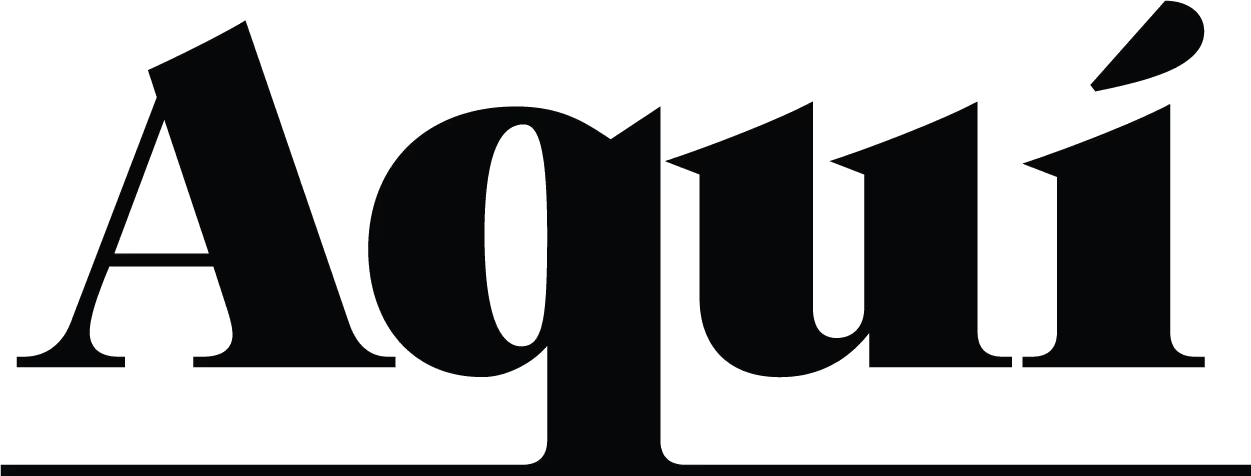Pan Animalia (with Ben Howitt)
In our line of work, our clients are the people who intrigue us the most. Get To Know is a series by Aquí where we take you behind-the-scenes to find out who they are and what they do.
In 2019, Aquí had the honour of creating the brand identity and website of Pan Animalia Galápagos, a charitable foundation that develops and supports conservation projects worldwide focused on protecting the health, welfare and biodiversity of both local (Galápagos) and global ecosystems. In awe of the work that they do, we are very excited to have Ben Howitt - the Founder and Managing Director - with us to give us more insights into wildlife conservation at the Galápagos Islands.
Aquí: Hi Ben! Could you tell us about yourself?
Ben: Yes, absolutely! I’m Ben Howitt, I was brought up in Singapore and I went to study at University of Bristol in the UK. I graduated as a vet and did three years of mixed clinical practice on the Island of Guernsey before I decided to head out to the Galápagos Islands to manage a volunteer and charitable veterinary clinic run by a US charity. I finished that in 2019, at which point I came back to the UK and started my own foundation, which you [Aquí] are very knowledgeable about already - Pan Animalia. And I’ve since joined the Worldwide Veterinary Services (WVS) as one of their project managers.
Aquí: What made you decide to go into veterinary?
Ben: I’ve had different answers to this question over the last ten years, and I think the most genuine answer is that when I was in high school, it [choosing veterinary] was sort of the best way to get practical experience within science. There’s a lot of science-based degrees - biology, biochemistry, for example - but veterinary allows you to be hands-on whilst exploring the scientific side of things too. And certainly because it was very focused on animals - the wildlife, especially - which I was very enthusiastic about when I was young.

Aquí: Well, thank you for your honesty. So, tell us more about Pan Animalia and how it came about!
Ben: The Galápagos is the bastion of the natural world and there’s always been growing conflicts between domestic or invasive species and endemic wildlife. During my nine months at the charity clinic, I was involved in supporting and helping to manage the domesticated animals’ population in efforts of conserving endemic wildlife. We were dealing with many domestic species - dogs, cats, and occasionally horses. The thing is, the Galapagos is not a huge place, but there’s a substantial population of dogs and cats around, and it’s hard to avoid the close interactions with the existing wildlife. We also had dogs and cats present to us with diseases that I’d never been exposed to in the UK before, mainly because a vast proportion of the population in the UK are vaccinated, and you don’t see the diseases that they are vaccinated against - distemper, parvovirus, and others. Tick fever is one in particular, which affects their platelets, and those dogs that are chronically ill are at risk of bleeding; this we saw on occasion. These diseases are seen globally, but it’s representative of how the Galapagos is under a similar strain as the rest of the world when it comes to the influences of human globalisation.
When the project ended, with the support of the community and a couple of other people, I went back to the UK and set up Pan Animalia with the idea of relaunching a veterinary programme. We have a model whereby local and community engagement is a heavier focus, and we have tried to change the entire structure so that it would be more sustainable for Ecuador. In fact, now we’ve got Pan Animalia registered as a Galápagos charity. Our head vet is Ecuadorian, one of our board members is from the Galápagos, and we are working towards having a team from Ecuador running the foundation and being the face of the project. Whilst I have loved to build and will continue to drive this venture, this is an Ecuadorian mission and I’m not the one to lead this project on the ground.
Our project has grown over the last year, and the idea is to create a training site for both Ecuadorian and international vet students with our colleagues at the Worldwide Veterinary Service. We also collaborate closely with the local institutions, governments as well as organisations to drive and support animal health and welfare around the Galápagos.
“Whilst I have loved to build and will continue to drive this venture, this is an Ecuadorian mission and I’m not the one to lead this project on the ground. ”

Aquí: That’s awesome. Could you tell us more about Galápagos Islands and its wildlife diversity?
Ben: The Galápagos Islands have got the highest level of endemism in the world - there are many species that have bred, evolved and adapted to their specific environment. For example: reptiles and birds. There are no endemic terrestrial mammals or amphibians on the Galápagos - none at all. It is thought that with the ocean currents, the drift of marine debris from mainland South America to the Galápagos would take about two weeks. And of course, the only species that could ever survive two weeks adrift would be reptiles. So that’s why reptiles became so iconic as the original endemic species of the Galápagos over millennia.
There also isn’t just one ecosystem, in fact, there’s thousands of small ecosystems. The Galápagos Islands are an archipelago of volcanic islands, but there are still forests, cacti, salt marshes and so on depending on the age of the island and when starter flora began colonising it. The sizes of some of these ecosystems are small, which is why any change in the population or the dynamic of that ecosystem could quite easily push a species over the edge to extinction. A good example would be the giant tortoises - there were 15 subspecies of them and now two are extinct. They have relatively small populations because their environments are not big enough to sustain large populations. Many of the subspecies look similar, but the shapes of their shells are different depending on the environment that they have adapted to. If you’ve seen Lonesome George, who was the last of his kind, he’s got an arch in his shell above his neck that allows him to stretch his neck to reach food sources that grow on the cactus. Another species over at Santa Cruz do not have that arch because they live on grassland and can eat off the floor. These adaptations take hundreds of thousands of years - it’s phenomenal.
“The Galápagos Islands are an archipelago of volcanic islands, but there are still forests, cacti, salt marshes and so on depending on the age of the island and when starter flora began colonising it. The sizes of some of these ecosystems are small, which is why any change in the population or the dynamic of that ecosystem could quite easily push a species over the edge to extinction.”

Aquí: I didn’t know that! So what are some of the common threats that wildlife face at the Galápagos Islands?
Ben: Certainly, one of them is plastic pollution. Overfishing is also a huge one with the recent fishing fleets seen off Ecuador. A lot of the species migrate from the Galápagos across the underwater ridge to the Cocos Islands that are near Central America. They migrate between these two likely breeding sites, but those two marine reserves don’t quite cross over each other; effectively a loophole that was utilised by fishing fleets, often at risk of picking up endangered shark species like hammerheads. There is some fantastic and substantial amount of work going on to enlarge the Marine Reserve.

Invasive species are one of the primary causes for concern and hold one of the heaviest threats to the endangered species on the Galápagos Islands. By invasive I mean species that are not native to the ecosystem and are placed there intentionally by us [mankind], or by accident through human movement e.g. shipping. Some examples are dogs, cats, horses, parasites, and flies. 18 species of Darwin's finches, namely the mangrove finch, are currently under threat from the parasitic Philornis downsi fly. These flies lay eggs in the nests of the finches and can quite often cause 100% mortality of the nestlings. How challenging is it to fight against flies that are present across 14 islands? There are now also apparently more invasive species of plants than there are native species of plants as well, which is quite frightening.
“By invasive I mean species that are not native to the ecosystem and are placed there by us [mankind], or by accident through human movement e.g. shipping.”
Lonesome George was about 112 years old when he died in 2012. He was from an island called Pinta Island in the north and the most honest reason why he was the last of his kind was because of the growing goat population in the late 1900s. Goats are ravenous in their appetites and consume the vegetation, food, water, and often shelter needed for the tortoises in the hot season. That competition was considered one of the primary causes of the extinction of the Pinta Island tortoises, which was why the goats were eventually eradicated.
On Floreana island in the south, there are 55 species on the IUCN red list of threatened species and I believe 12 locally extinct species including the Galápagos racer snake - the one that hunted the marine iguana in one of the episodes of Planet Earth II. There are multiple species of racers on different islands, but the Floreana racers are now locally extinct - thankfully I believe that a small population has apparently persisted on a local nearby island. The primary cause was stated to be due to the introduction of feral cats and rats on the islands - this is a topic covered in the floreana re-wilding programme.

Aquí: Wow, I never thought that one species could cause the extinction of another. That’s something to think about. But are we able to stop this from happening?
Ben: Well, when it comes to conservation, you often hear people compare it to efforts to combat climate change; sometimes people even take a fatalistic approach to it. But we have to recognise that extinction is happening entirely due to our influence; rats, cats, dogs as examples are there because of us. The Galápagos represents the entirety of our natural world, all in one microcosm of a place, shown by the vast number of small ecosystems where similar species adapt to different environments. We are allowing our influence to interrupt that, and the biggest question is: when do we stop interfering with nature? It takes millions of years for those species to develop and we’ve contributed to their diminishing populations and loss in not far off 100. That’s the frightening reality of how damaging we are because of our way of life. This is reflective across the world. But the real power is that whilst we’re sitting right at the top, and although we are often the cause, we are also the very people who are capable of stopping it.

“But the real power is that we’re sitting right at the top, and although we are often the cause, we are also the very people who are capable of stopping it.”
Aquí: I think it’s quite ironic that these species are labeled as “invasive” when we are the ones who are.
Ben: Exactly, and in many circumstances we’re self-involved to the extent that we look at every issue as though we are not the focal problem. We look at cats, dogs, goats etc as invasive species that we have to manage, and whilst this is true and there are incredible people working hard on this, we’re doing all of this without necessarily addressing the fact that we are the ones who have influenced it. This is not an issue isolated in any way to the Galapagos, but in every part and ecosystem of the world. Nonetheless, like I said, we’re also the only ones who can do something about it.
Aquí: It’s a sobering thought and something that we’re not really exposed to, which makes us realise how spreading awareness plays a key part in Pan Animalia’s mission. As a not-for-profit, there must be a lot of challenges that you face. Could you tell us a little bit more about that?
Ben: Our goal at Pan Animalia is to create an Ecuadorian programme that can provide opportunities for Ecuadorian and South American vets. It has to have a generational structure. Whilst launching any project can have an impact from day one, it needs to have sustainability built into it so that it exists beyond an industry standard five-year plan. Our goal is to develop and build the programme, and so it needs that long-term perspective; it does not have a quantifiable end date. The approach that we use is multi-pronged; whilst we’re treating animals, engaging with the community, and sterilising, the greatest influence we can have on the future is training the next generation of veterinary students and handing this mission over to them.
“ ...the greatest influence we can have on the future is training the next generation of veterinary students and handing this mission over to them.”

With that being said, all these projects do require funding, so money is our biggest challenge and even more so with the pandemic. Appealing to organisations that provide grants was something we did a lot of last year, but because of the pandemic, many organisations had to close their grants and there are currently no new grant writings available. We run a nonprofit so the money that we get through charities goes back into running the organisation. If we can’t find ways to fund our projects while making sure we can pay our staff and the site rental, then we’ve lost our mission. We have to think of a way to communicate our mission and goals in a way that appeals to people’s hearts. The most valuable of the lot are the everyday people who give $20-50, as well as the philanthropic figures and donors. It really goes a long way for us.
“We run a nonprofit so the money that we get through charities goes back into running the organisation. If we can’t find ways to fund our projects while making sure we can pay our staff and the site rental, then we’ve lost our mission.”
Another challenge is trying to get a project there that works for everyone. As I’ve mentioned at the beginning, Pan Animalia Galapagos aims to build a relationship with the community, so we have to ensure that we are doing enough for them by running projects that they can appreciate. We’ve got to make sure that all the government institutions are happy with the projects we’re working on, which can be a challenge at times because different stakeholders have different agendas.
Aquí: So what is design to you? Do you use it in your day-to-day life at Pan Animalia?
Ben: I’m not that design-oriented, that has never been my talent, that’s why we’ve got Aquí to help us out. I think design is very crucial for the brand because a huge part of how people perceive Pan Animalia is through our branding. It’s our identity - how people recognise us especially with potential donor sponsors. I may not consciously use design in my day-to-day life, but it is embedded in most of the things that I do - creating newsletters, sending emails and presentation decks, etc. It wouldn’t be the same without the design and branding aspect to all of this. There’s a lot more you can convey with the help of design.
“I think design is very crucial for the brand because a huge part of how people perceive Pan Animalia is through our branding.”
Aquí: Where do we start if we’d like to learn more about wildlife conservation in the Galápagos Islands?
Ben: I think learning about the invasive species would be a great way to understand wildlife conservation in the Galápagos. I learnt most of these things when I was being exposed to it on the Galápagos itself, and not when I was in school. However, there are plenty of online resources with informative articles on the islands that you can get started with.
If you’d like to keep up with Pan Animalia’s efforts on the ground, you can do so by signing up to their newsletter on their website or following them on social media.
You may also like












